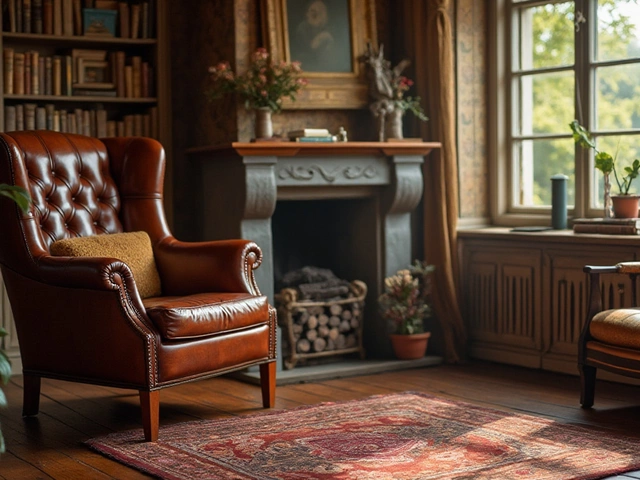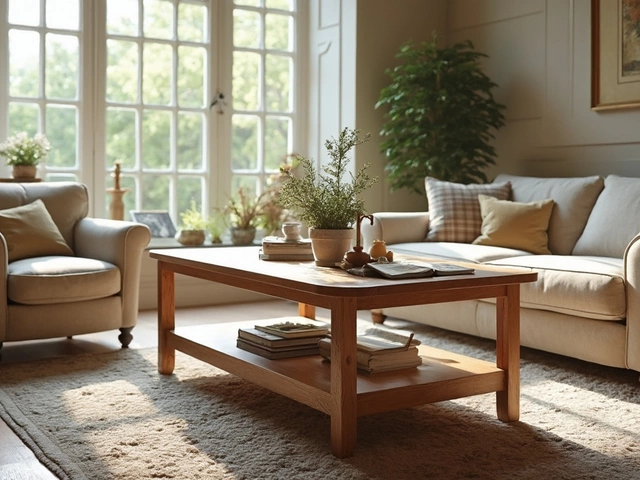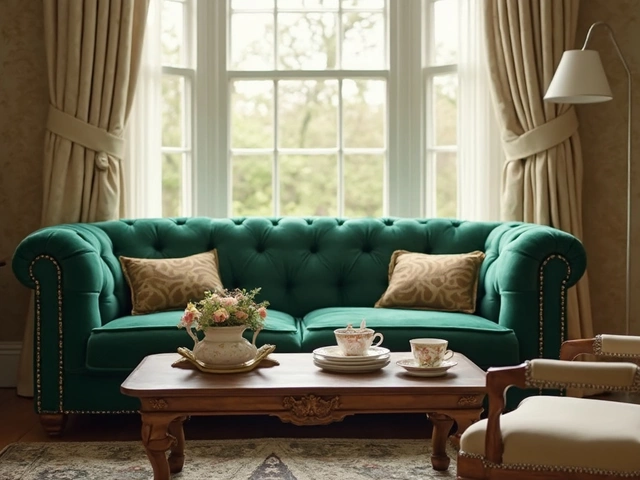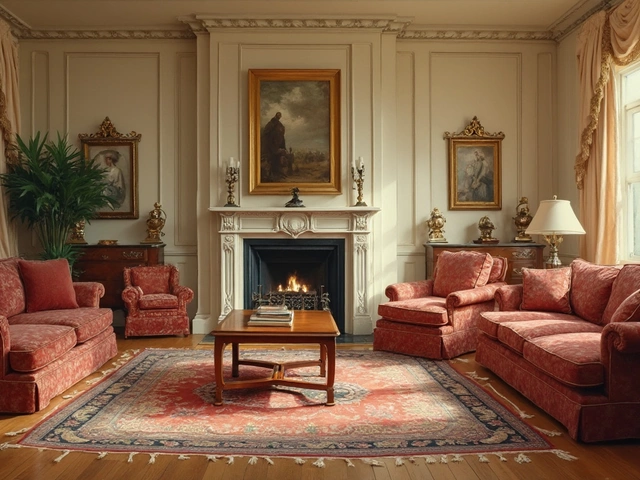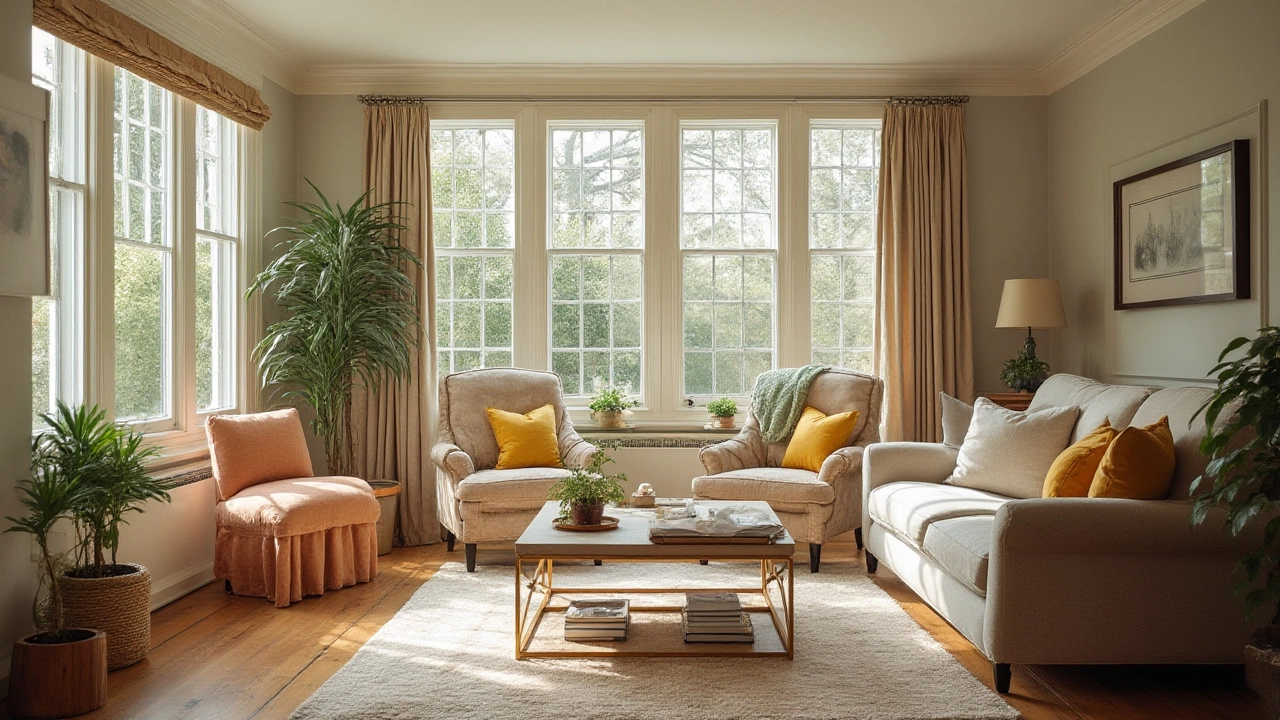 18
Jul,2025
18
Jul,2025
It’s easy to stick the couch against the wall and call it a day. But is that the smartest thing for your space, or just the laziest? The truth is, where you put your couch against wall can totally change the energy and usefulness of a room. My daughter Orla insists the sofa’s best for blanket forts where there’s a back to hide behind. But adults, we need more than handy hiding spots: function, comfort, style, and the subtle art of making a living room not look like a waiting room at the DMV. Let’s crack open the sofa debate and see if you should really push that beast up to the drywall, or carve a little breathing room.
Why the Default? Common Reasons Sofas Land Against the Wall
Visit any friend’s house—family movie night or not—and the odds are high their main sofa is jammed along the longest wall. It’s kind of tradition, right? But like drinking orange juice after brushing your teeth, just because people do it doesn’t mean you have to. So, why do folks default to the wall?
First up is space—or lack of it. City-dwellers with tiny living rooms often feel pushing the couch flat against the wall is the only way they can squeeze in other furniture. The idea is to "maximize floor space." But here’s the twist: interior designers have proven that putting furniture up against the wall can make your room feel smaller, not bigger. The eye expects straight lines and then the room just looks flat and boxed in.
Another big driver is tradition. Our parents and their parents did it, so we often repeat it. It’s the same reason the junk drawer lives in the kitchen. It just does. But again, tradition can blind us to better options.
People also chase symmetry. If that big rectangle is lined up with the wall, everything “looks right.” And, hey, it's easier to vacuum. But here’s where studies published by the American Society of Interior Designers get interesting: rooms with floating seating (meaning couches away from walls) rank much higher for coziness, creativity, and conversation flow. Humans actually like rounding a corner and being welcomed by a sofa, not passing by it like they’re skirting a fence.
Let’s not ignore tech. Many of us grew up when TVs were chunky monsters that dictated everything. You needed to get as far back as possible to see the whole picture. But now? With wall-mounted flatscreens and wireless everything, you can be more flexible. Even renting isn’t an excuse anymore—clever rugs, modular storage, and 21st-century sofa legs let furniture float without marring anything.
Of course, in long or narrow rooms, sometimes there’s just not much option—one end’s a passage, the other’s a window, and the couch HAS to live on the wall. But even then, there are tricks to soften the sharpness and make things feel deliberate, not just forced.
To sum it up: people often put their sofa against a wall to "create space," keep things tidy, and because, well, that’s what feels normal. But is it really the best?
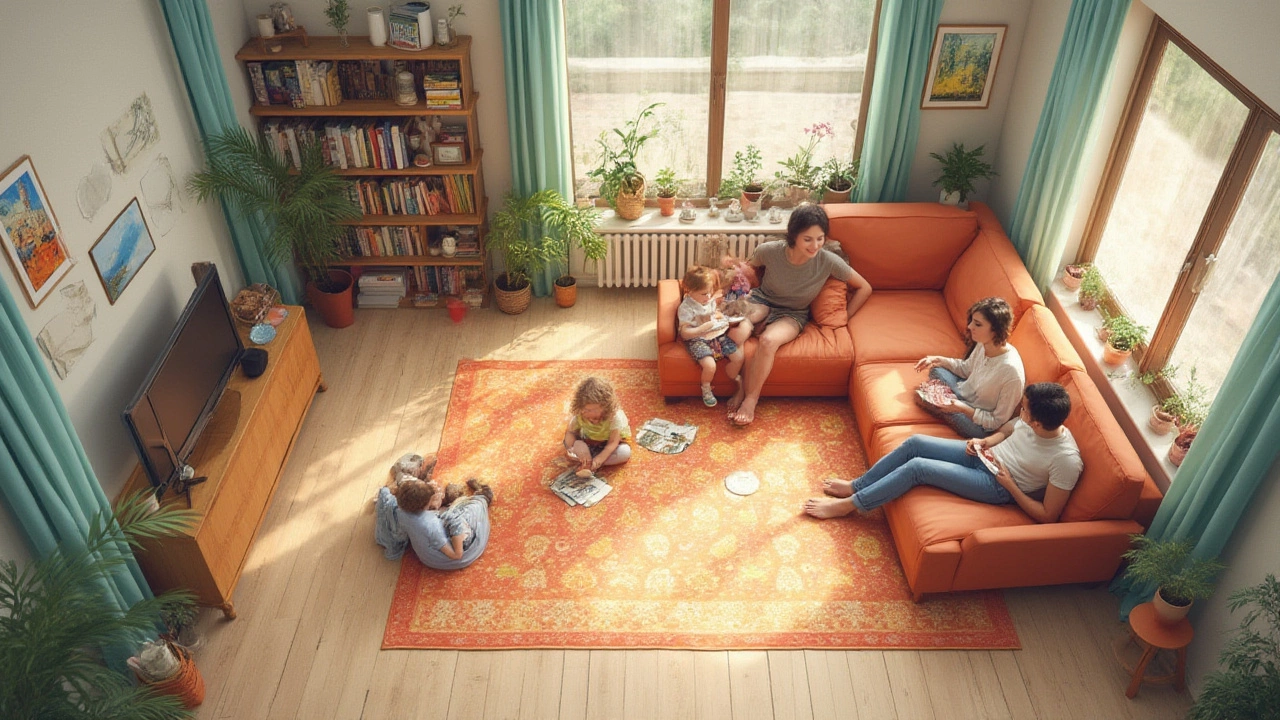
The Pros, Cons, and Surprising Tricks of Pushing (or Floating) Your Couch
Let’s pull apart that wall-hugging sofa habit. What happens if you stick to tradition, and what do you give up if you decide to break the rules?
First, the upshots of a couch against the wall:
- It can feel open-ish in compact spaces. Especially in rooms under 150 square feet, hugging the wall can keep things from feeling crowded.
- Easy cleaning. Less surface area under/behind the sofa to trap toys, socks, and (in my house) inexplicable raisins.
- Simple layouts. You anchor one piece, then build out everything else easily. Armchair here, coffee table there, TV right opposite—done!
- Support for “fort mode.” OK, maybe only my daughter Orla cares about this, but against the wall is a key strategic spot for blanket-castles.
Now, let’s check the flip side—the costs of always opting for the wall:
- Less flow. Traffic jams around the edges, piles of shoes in corners, and nowhere to sneak by if the dog claims your spot.
- No focal point unless you’re staring at the TV, which sucks the warmth right out of a room.
- Lost coziness. Furniture all glued to the edges can make the middle awkward—goodbye, intimate chats and board games on the floor.
- Space feels boxed-in. This is the opposite of what you actually want, no matter how small the room is.
So what do designers and the folks who actually live in these rooms do differently? They float the couch, at least a bit. Pull it off the wall. Even just 3 to 5 inches of breathing space behind the sofa can create the illusion of more room. Add a sofa table for lamps or plants (that’s bonus function, too). Or, you can use the back of the couch to zone off the living area in an open-plan space, setting up boundaries without building walls.
A clever trick for tiny rooms: float the sofa, then place a large rug underneath that includes all the seating, coffee table, and side chairs’ front legs. Magically, everything feels connected, and the rug defines the conversation "zone." It gives a sense of expansiveness without any heavy lifting or extra spending.
Ever wonder what happens in huge open spaces? The answer isn’t as simple as hugging a wall or yanking the couch into no-man’s-land. In really big rooms, pushing the sofa against a wall can make the center feel empty and weirdly distant, like a hotel lobby rather than a home. Floating or angling arrangements break up the space, make it less echoey, and encourage people to hang out, not just dash through on the way to the kitchen.
Throw in some real-life numbers: According to Houzz’s 2024 designer survey, 64% of pro interior designers now recommend floating sofas—when the room allows—over pushing everything to the perimeter. Users report better comfort and flexibility for both adults and kids. For people worried about losing square footage, designers say you only really need about 18-24 inches between the wall and the back of a couch to pull off the float effect.
Check out this quick table comparing the experience of wall-hugging versus floating sofa placement:
| Placement Style | Pros | Cons |
|---|---|---|
| Against the Wall | Maximizes floor space in small rooms, simple setup, straightforward vacuuming | Can feel boxy, less natural conversation, little room for accessories |
| Floating | Softer look, better flow, highlights central rug/table, more social | Needs bigger space, can trap crumbs and toys, may be less intuitive for some guests |
So don’t fall for the myth that walls are the boss. A little creative movement—or even just a few inches—can make a wild difference. Whenever possible, experiment. Drag the sofa out a foot, sit down, and see if the light and the vibes shift. (Bonus points for a helper who’ll act as the moving muscle—bribery with pizza works well in my house.)
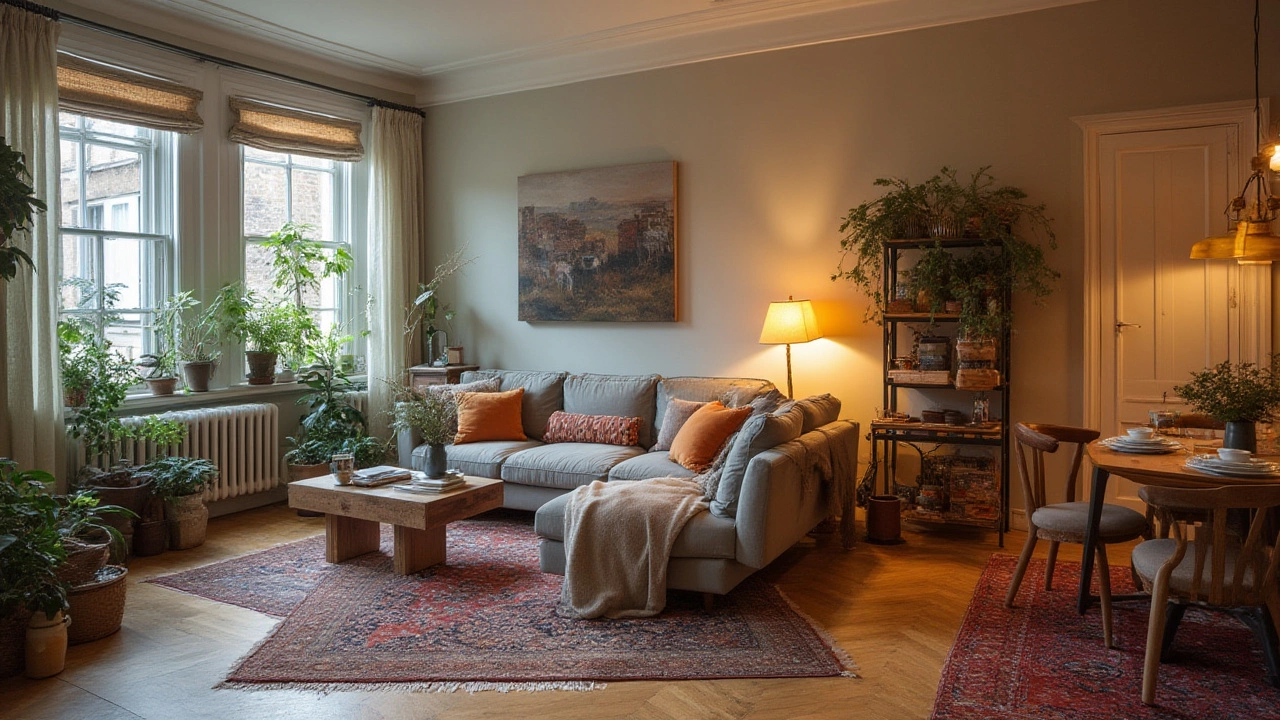
Smart Tips for Your Home: Finding the Best Spot for Your Sofa
Not sure where to start? Try thinking of your living room as a stage. Most folks want both comfort and a wow-factor, without feeling like they’re in a museum. Here are the most useful tricks I’ve learned about sofa placement—the kind Orla and I used when we recently rearranged our own living room (with much argument and two broken mugs):
- Start with the focal point. Is there a fireplace, a gorgeous window, a massive TV, or a piece of art you want to highlight? Arrange your seating facing or centering on that, not just the emptiest stretch of wall.
- Float it—at least a little. Even an 8-inch tuck away from the wall can make the room breathe. Try a slim console table behind the couch for keys, books, or sneaky mugs.
- Zone with rugs. Large area rugs anchor "conversation islands" and let your couch and chairs float as a group, even if the walls aren’t close by.
- Create paths. Place the sofa so you can slip past without climbing over anyone (the minimum is a 30-inch wide path for comfort).
- Don’t block windows or radiators. Floating the sofa lets you take advantage of light, views, and airflow.
- Experiment—then live with it awhile. Try a new setup for a week. Notice where you actually want to plop down after work, how easy it is to chat with guests, or help with homework at the coffee table. Sometimes what looks weird at first soon feels right.
- Use symmetry—if it feels good. Two identical chairs facing your sofa? Great, if you love neatness. Prefer things more dynamic? Go for an L-shape with a sectional and a single quirky armchair.
If your room is awkward or odd-shaped, lean into that. Put the sofa on the diagonal, or split your seating into two smaller sofas facing each other. Tiny studio and you *must* use the wall? Flank the sofa with tall bookcases or lush plants to build visual interest. Teens and kids making blanket forts? Leave them a gap for tunneling. Real life isn’t staged—your room shouldn’t look like no one lives there.
Remember, nobody except maybe your mother-in-law cares about the “right” way. What matters: comfort, flexibility, and how the space works for you. The best homes are lived-in, not magazine-perfect. Rearranging the sofa might even change the way your family hangs out together. It did in mine. Orla suddenly claimed the far corner as her reading nook—bonus for all of us.
Got a weird layout, sloping ceilings, or ancient radiators? Go ahead, break the rules. You’ll feel when it works. Don't just default to the wall—your living room deserves a little creativity.
